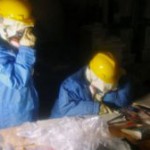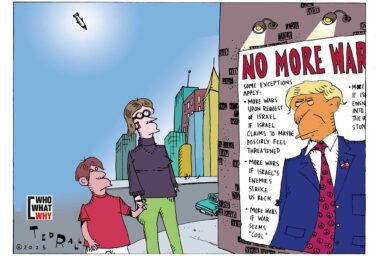Now that we know all about the threats to capital, and to the rest of us, we find out something about the workers at the plant.
 When I first heard about the disaster at the Fukushima Daiichi nuclear plant, my thoughts flew to the workers at the plant, the people at most risk. Who were they? How did they come to work there? What rights and protections did they have?
When I first heard about the disaster at the Fukushima Daiichi nuclear plant, my thoughts flew to the workers at the plant, the people at most risk. Who were they? How did they come to work there? What rights and protections did they have?
The corporate executives and shareholders, the supporters of nuclear power, were presumably safe, hundreds or thousands of miles away. But what about these front-line staff who kept the plant operating? I waited, day after day, for good reporting on this. And I thought—boy, what I could do with a proper reporting team and resources. I kept hearing reports about heroic Japanese workers who would sacrifice anything for the common good.
Now, a full month later, when far fewer people are paying attention to the still-unfolding crisis, the other shoe drops.
In an article in the New York Times headlined “Japan Workers Braved Radiation for a Temp Job”, we learn that:
The ground started to buck at the Fukushima Daiichi nuclear power plant, and Masayuki Ishizawa could scarcely stay on his feet. Helmet in hand, he ran from a workers’ standby room outside the plant’s No. 3 reactor, near where he and a group of workers had been doing repair work. He saw a chimney and crane swaying like weeds. Everybody was shouting in a panic, he recalled.
Mr. Ishizawa, 55, raced to the plant’s central gate. But a security guard would not let him out of the complex. A long line of cars had formed at the gate, and some drivers were blaring their horns. “Show me your IDs,” Mr. Ishizawa remembered the guard saying, insisting that he follow the correct sign-out procedure. And where, the guard demanded, were his supervisors?
“What are you saying?” Mr. Ishizawa said he shouted at the guard. He looked over his shoulder and saw a dark shadow on the horizon, out at sea, he said. He shouted again: “Don’t you know a tsunami is coming?”
Mr. Ishizawa, who was finally allowed to leave, is not a nuclear specialist; he is not even an employee of the Tokyo Electric Power Company, the operator of the crippled plant. He is one of thousands of untrained, itinerant, temporary laborers who handle the bulk of the dangerous work at nuclear power plants here and in other countries, lured by the higher wages offered for working with radiation. Collectively, these contractors were exposed to levels of radiation about 16 times as high as the levels faced by Tokyo Electric employees last year, according to Japan’s Nuclear and Industrial Safety Agency, which regulates the industry. These workers remain vital to efforts to contain the nuclear crisis at the Fukushima nuclear plants.
They are emblematic of Japan’s two-tiered work force, with an elite class of highly paid employees at top companies and a subclass of laborers who work for less pay, have less job security and receive fewer benefits. Such labor practices have both endangered the health of these workers and undermined safety at Japan’s 55 nuclear reactors, critics charge.
“This is the hidden world of nuclear power,” said Yuko Fujita, a former physics professor at Keio University in Tokyo and a longtime campaigner for improved labor conditions in the nuclear industry. “Wherever there are hazardous conditions, these laborers are told to go. It is dangerous for them, and it is dangerous for nuclear safety.”
Of roughly 83,000 workers at Japan’s 18 commercial nuclear power plants, 88 percent were contract workers in the year that ended in March 2010, the nuclear agency said. At the Fukushima Daiichi plant, 89 percent of the 10,303 workers during that period were contractors. In Japan’s nuclear industry, the elite are operators like Tokyo Electric and the manufacturers that build and help maintain the plants like Toshiba and Hitachi. But under those companies are contractors, subcontractors and sub-subcontractors — with wages, benefits and protection against radiation dwindling with each step down the ladder. …
There is no reasonable explanation of why it took a full month to begin receiving proper reports on this situation. But it’s pretty typical of American journalism’s attitude toward labor vs. capital. During the weeks that we were not getting this information, there was a steady tattoo of reporting about the consequences for investors.
We can—and must—do much better. A good rule of thumb: the news should focus first on the most vulnerable.
Image Credit: (https://gattibidhi.files.wordpress.com)


